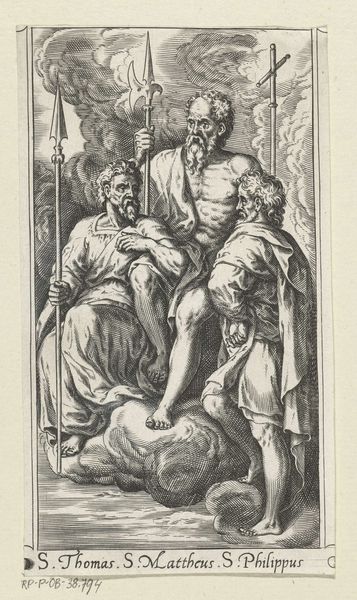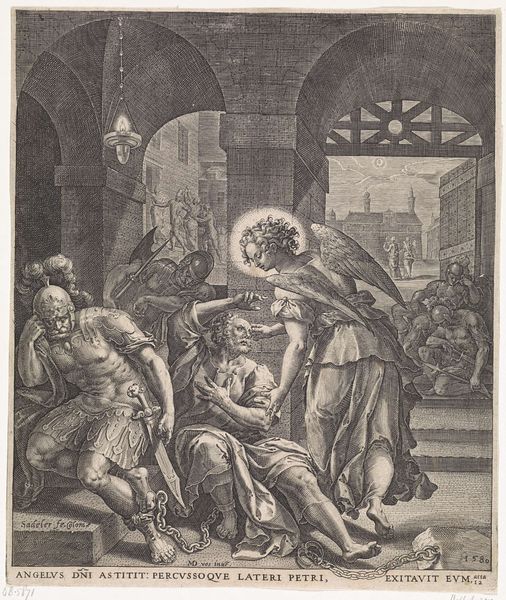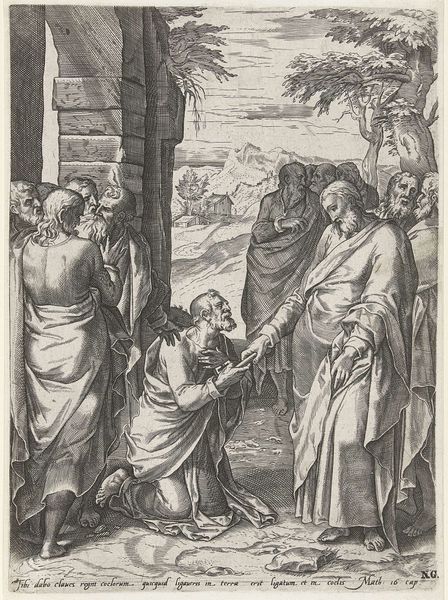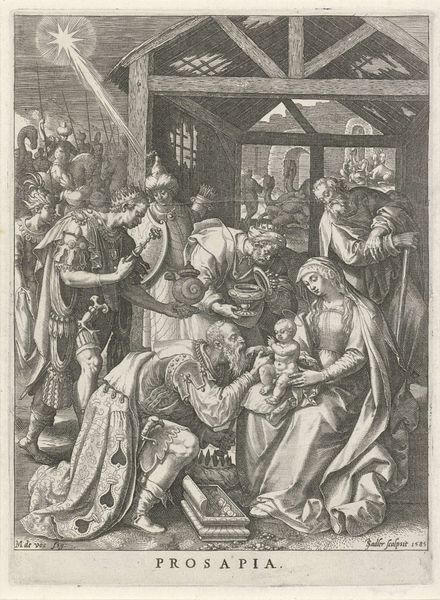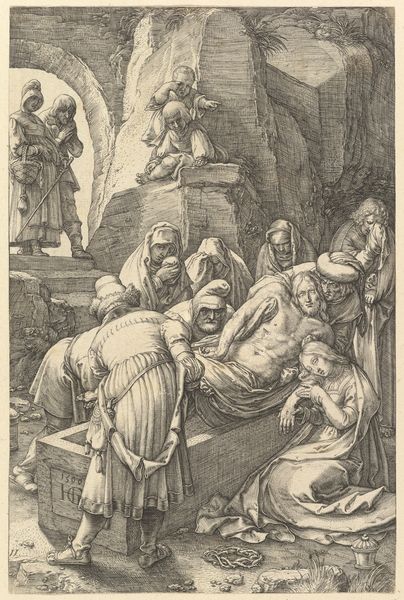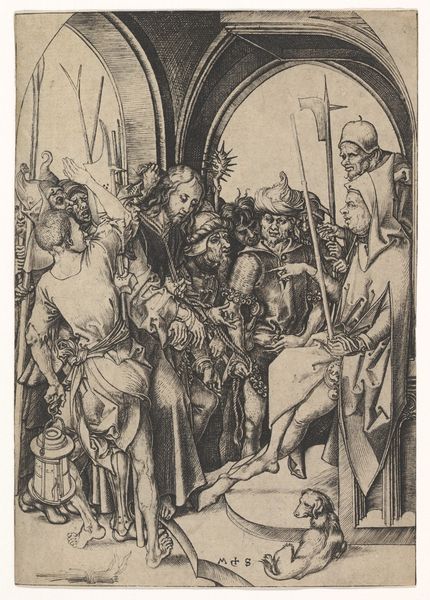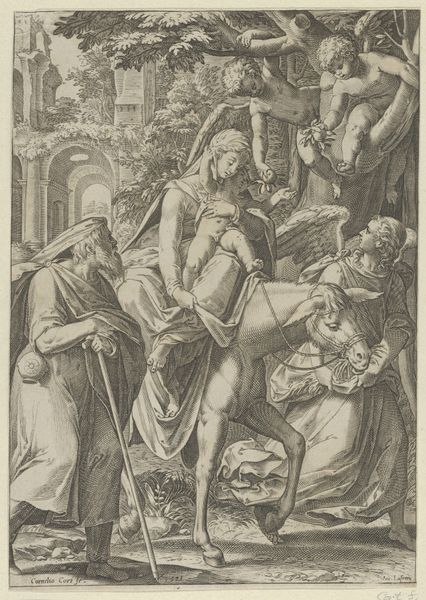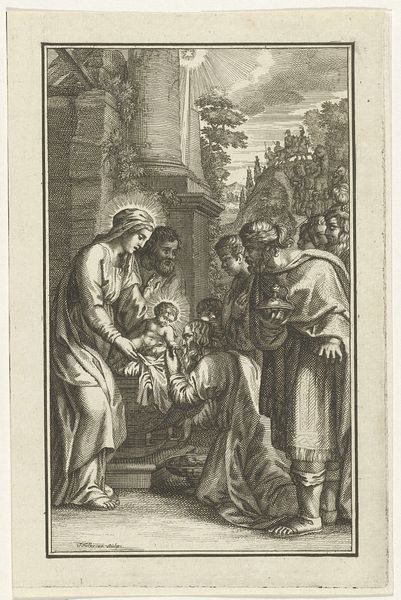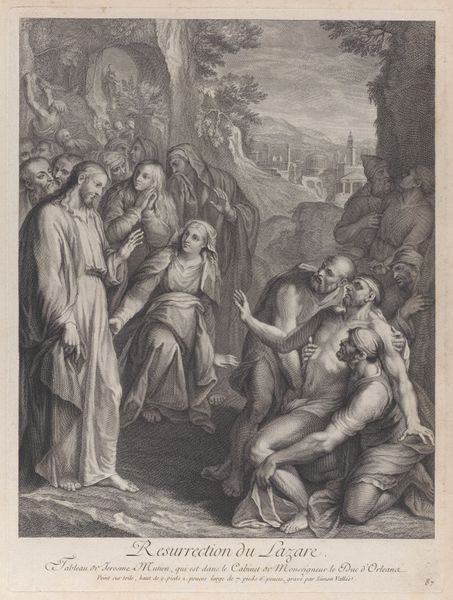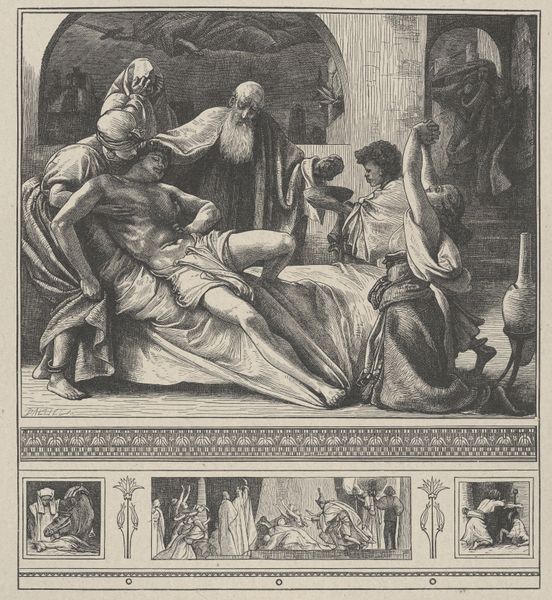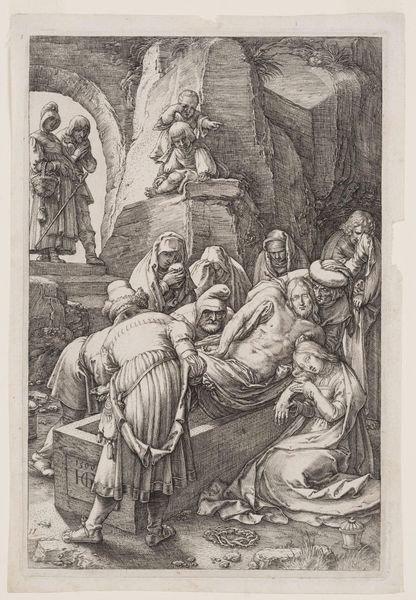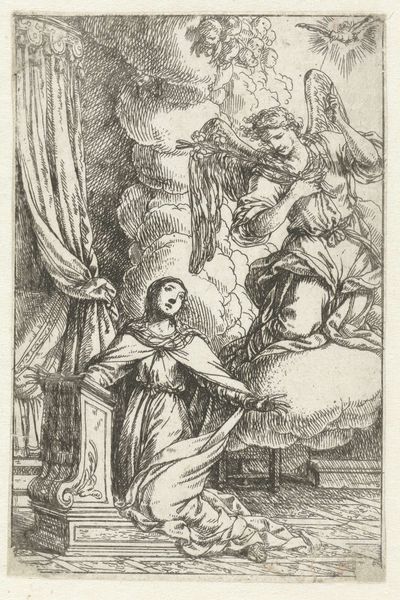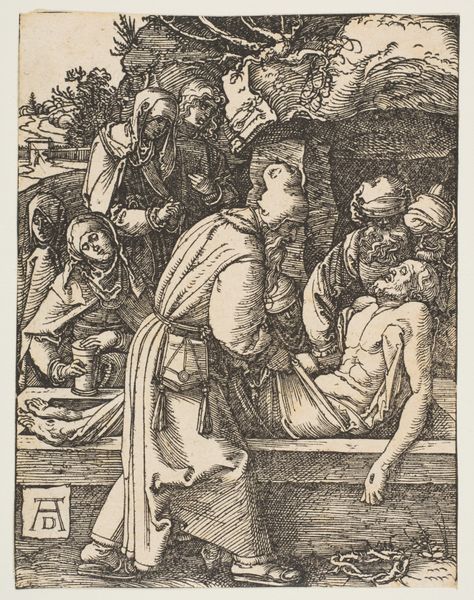
print, engraving
#
narrative-art
#
baroque
# print
#
figuration
#
history-painting
#
northern-renaissance
#
engraving
Dimensions: height 268 mm, width 203 mm
Copyright: Rijks Museum: Open Domain
Nicolaes de Bruyn’s ‘Return of the Prodigal Son’ was made using the technique of engraving. The method involves using a tool called a burin to carve lines directly into a metal plate, which is then inked and printed. Look closely, and you can see the crisp, precise marks left by the burin. The image is composed entirely of these lines, which create a range of tones and textures. The degree of skill required to execute such a detailed engraving was considerable, reflecting the value placed on craftsmanship in the 17th century. This print is not just an image; it's also a product of labor. The social context of the work - its biblical subject, its display of wealth, and the very act of its careful and laborious production – speak to the values of the time. Consider how the material and process influence our perception, blurring the lines between art, craft, and social history.
Comments
No comments
Be the first to comment and join the conversation on the ultimate creative platform.
